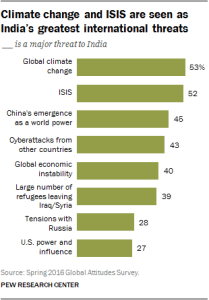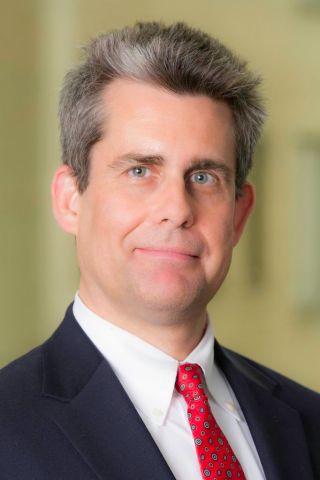

Republicans opposed to Donald Trump as their party’s nominee are pinning most of their hopes on stopping him at this summer’s national convention in Cleveland. Although Trump has more delegates than his two remaining rivals (760 or so by our count), he needs at least 1,237 to win the nomination on the first ballot. Texas Sen. Ted Cruz and Ohio Gov. John Kasich are hoping to win enough delegates in the remaining primaries to keep Trump from reaching that magic number. After the first ballot, the thinking goes, most delegates become “unbound” and can vote for other candidates. They could even draft a completely new candidate (though House Speaker Paul Ryan, a frequently mentioned “dark horse” alternative, ruled himself out earlier this week).
If all that sounds a bit like a Hail Mary pass, bear in mind that these situations have happened before. Not recently, mind you (the last time was at the 1952 Democratic convention), but they have happened. Since the Civil War there have been eight Republican and 10 Democratic conventions that took more than one ballot to pick a nominee. In only seven of those 18 instances did the first-ballot leader win the nomination.
Bearing in mind that until the 1970s most convention delegates were chosen by party insiders rather than in primaries, here’s a look back at the cases in which someone came from behind to win the nomination from the first-ballot leader. They illustrate the machinations, sudden shifts in momentum and general unpredictability of contested conventions. (By the way, only four of these 11 men ended up winning the presidency, the last one more than a century ago.)
Democrats, 1868: Former Rep. George H. Pendleton led on the first ballot and built support through several more, but he couldn’t get close to the two-thirds he needed under a party rule in place until 1936. His support began to drain away after the 12th ballot. After several more inconclusive ballots, the convention stampeded toward its chairman, former New York Gov. Horatio Seymour – who didn’t want the nomination and only accepted it under protest. Seymour lost to Republican Ulysses S. Grant.
Republicans, 1876: Sen. James G. Blaine led on the first ballot but was well shy of the 378 votes he needed for a majority. (Unlike the Democrats, the GOP never had a two-thirds rule for nominations.) Rutherford B. Hayes began to pick up support on the fifth ballot, but Blaine continued to lead right up to the seventh and final ballot, when a rush toward Hayes put him over the top. In one of the most controversial elections in U.S. history, Hayes went on to edge out Democrat Samuel J. Tilden in the electoral vote, even though Tilden won the popular vote.
Republicans, 1880: Blaine tried again for the Republican nomination, but was up against a comeback attempt by Grant. On the first ballot, Grant had 304 delegate votes and Blaine had 284 – both far more than any other candidate but neither near a majority. Balloting continued, but both men’s support held firm, and it became clear the convention was deadlocked. There was little movement until the next day when, on the 34th ballot, delegates began moving toward James A. Garfield of Ohio. Two ballots later, Garfield was the nominee, and six months later he was the president-elect.
Republicans, 1888: Sen. John Sherman, a runner-up in 1880 and 1884, had more than twice as many first-ballot votes as his nearest challenger, but far from the 416 votes he needed. Sherman picked up 20 more votes on the second ballot, but his support stalled after that. By the fourth ballot, several “favorite son” candidates had withdrawn, with much of their support flowing to former Sen. Benjamin Harrison as Sherman’s support ebbed away. Harrison won on the eighth ballot, and went on to defeat President Grover Cleveland.
Democrats, 1896: In an election dominated by currency issues, the choice for the Democratic Party was which pro-silver candidate to nominate. The early favorite was former Rep. Richard “Silver Dick” Bland, who for decades had advocated the free coinage of silver (an inflationary policy that many believed would aid debt-burdened farmers). On the first ballot, Bland led William Jennings Bryan by nearly 100 votes. Both men gained votes on the succeeding two ballots, as other candidates dropped out. But on the fourth ballot, a half-dozen states shifted from Bland to Bryan, giving him the lead. The trend was clear, and after Bland and the other silver candidates withdrew in favor of Bryan he was nominated overwhelmingly on the fifth ballot. Bryan went on to lose to William McKinley in the general election.
Democrats, 1912: This convention was one of the clearest examples of the impact of the Democrats’ two-thirds rule. House Speaker Champ Clark entered the convention with more delegates than his main rival, New Jersey Gov. Woodrow Wilson. Both men gained support throughout the first several rounds of balloting, and Clark won a majority on the 10th ballot when New York’s delegation shifted to him. But he needed two-thirds, or 726 votes, and the endorsement of New York’s Tammany Hall machine turned many in the party’s reformist wing against him. On subsequent ballots Clark began losing support to Wilson, who overtook Clark on the 30th ballot and finally won the necessary two-thirds on the 46th.
Both parties, 1920: At the beginning of June one might have thought the 1920 election would be between Republican Leonard Wood and Democrat William Gibbs McAdoo. Both men led in delegates at the start of their respective conventions, but ultimately fell short. At the Republican convention, Wood led early but could not shake loose the supporters of Illinois Gov. Frank Lowden (from the party’s conservative wing) or California Sen. Hiram Johnson (from the progressive wing). Warren Harding of Ohio emerged as an acceptable compromise candidate and won on the 10th ballot. On the Democratic side, former Treasury Secretary McAdoo began with a narrow lead over Attorney General A. Mitchell Palmer, but never came close to a majority. When supporters of Palmer and other candidates began slipping away, most of them went not to McAdoo but to Ohio Gov. James Cox, who began the convention in third place. Cox overtook McAdoo on the 10th ballot, but needed 33 more to get a majority and one more for the requisite two-thirds. (Harding beat Cox in a landslide that November.)
Democrats, 1924: McAdoo tried for the nomination again four years later but found himself in another standoff, this time with New York Gov. Al Smith. On the first ballot McAdoo had nearly twice as many votes as Smith, but with neither man close to a majority (much less the needed two-thirds) the convention dragged on for more than two weeks. Finally, after nearly 100 ballots, McAdoo and Smith conceded that neither of them could win. After they both withdrew from contention, the delegates quickly gravitated to John W. Davis, one of a slew of “favorite son” candidates who had trailed well behind the leaders. Davis won on the 103rd ballot, a record, but lost to President Calvin Coolidge in November.
Republicans, 1940: Crimebusting New York District Attorney Thomas Dewey was the early favorite, but the war in Europe caused popular sentiment to shift by the time GOP delegates gathered in June. Although Dewey led on the first ballot, his support rapidly drained away toward corporate executive (and former Democrat) Wendell Willkie, who favored aiding the Allies, and to Ohio Sen. Robert Taft, leader of the party’s non-interventionist wing. Willkie won on the sixth ballot, in what The New York Times described as “one of the greatest upsets in the history of the convention system in America. A newcomer to the party, opposed by its veteran leaders, and lacking the usual organization to build up a candidate’s strength, Mr. Willkie came into the picture here on the crest of a popular wave which not only did not diminish but finally asserted itself on the convention delegates themselves.”
Democrats, 1952: In the last major-party convention to go more than one ballot, the first-ballot leader was Tennessee Sen. Estes Kefauver. But close behind were Georgia Sen. Richard Russell and Illinois Gov. Adlai Stevenson (who was not even a declared candidate until after the convention opened). After President Harry S. Truman persuaded the fourth-place candidate, Averell Harriman, to drop out in favor of Stevenson, a rush to the Illinoisan began that gave him the nomination on the third ballot.
